Scientifically named Epipremnum aureum, Pothos plants are easy to grow and are found in several colors, patterns, and foliage.
Native to the tropics of Southeast Asia and the Pacific Islands of the West, they have an array of common names, including the silver vine, devil’s vine, taro vine, and Ceylon creeper.
The Pothos plant can die for various reasons, and being underwatered is one of them.
While these plants are particularly low-maintenance, they start showing systems of long-term drought if neglected for too long.
Table of Contents
How to Tell if My Pothos is Underwatered?
Your Pothos plant is underwatered if you see the soil pulling away internally from the pot. Droopy, brown, and wilted leaves are yet another reason as well as soil that is drying too quickly.
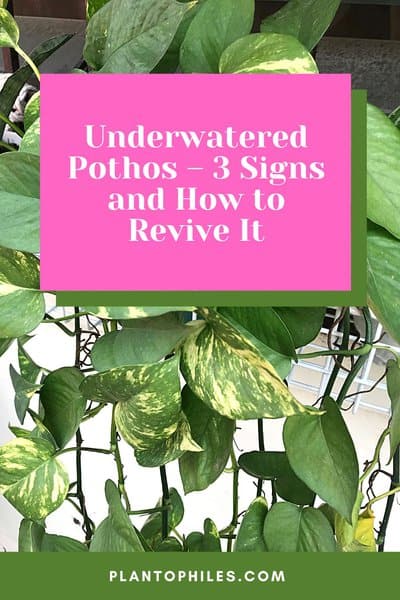
Symptoms of Underwatered Pothos
An underwatered Pothos will exhibit signs such as discoloration of the leaves and dry and segregated soil.
1. Droopy, Brown, and Wilted Leaves
If left unwatered for too long, the leaves of Pothos plants tend to droop and look lifeless. After some time, those drooping leaves will begin falling off.
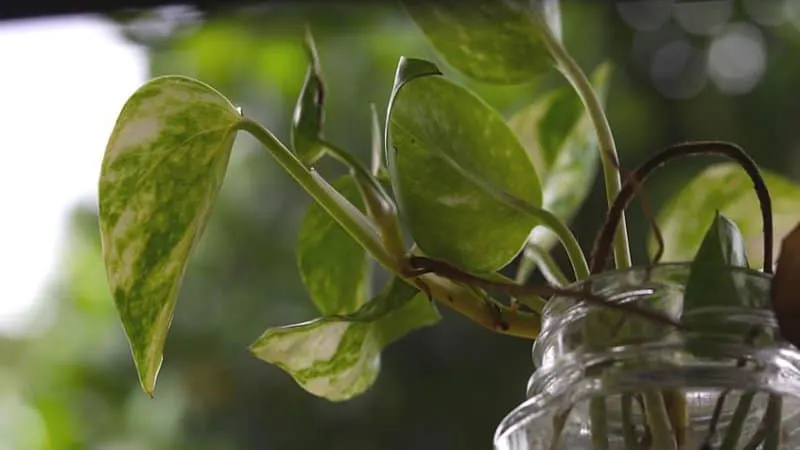
Discoloration occurs, signifying that the chlorophyll of the leaves is dissipating and disappearing. The yellow-to-brown transition should be considered a warning.
Do not wait for all these symptoms. You will need to act on the first signs.
2. Too-Quickly Drying Soil
Dehydration occurs when the soil is not moist enough. This happens long before the plant and its leaves start showing any symptoms.
If the soil’s drying out too quickly between waterings, you might have to repot the plant altogether. But this check comes before the plant shows symptoms – it is precautionary.
A pot that’s too small cannot hold the amount of water needed, and you may need a bigger pot.
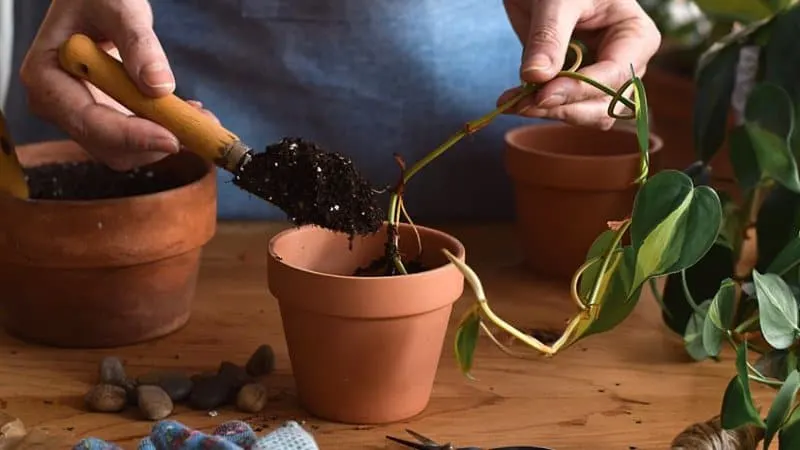
Sure, smaller Pothos plants don’t need big pots, but when they grow, their requirements will be impeded by their small container. Repot your Pothos after a year of growth.
3. Soil Pulling Apart and Away
If you notice that the soil is segregating, pulling apart, and forming consolidated shapes, then it is an indicator that your Pothos is underwater.
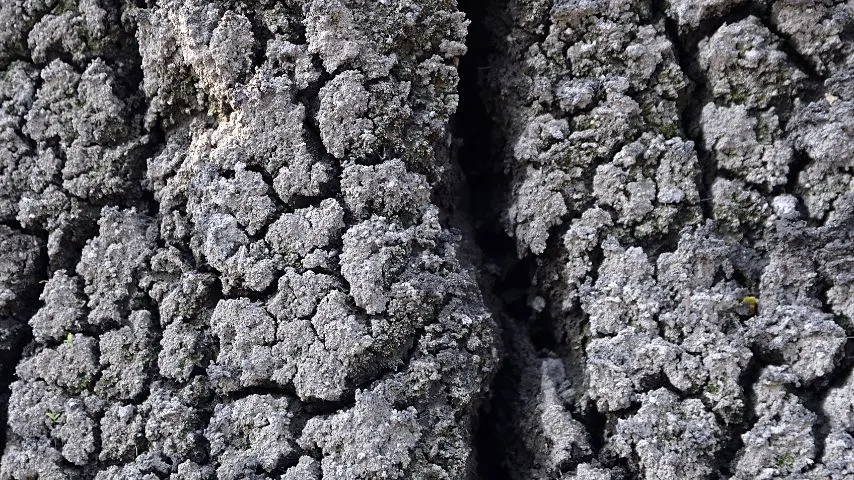
Because of lacking moisture, soil tends to contract.
This requires plant parents to reduce the time between waterings.
The soil must have a constant supply of water so that even when you’re not watering, the soil remains moist enough to sustain the plant until the next watering.
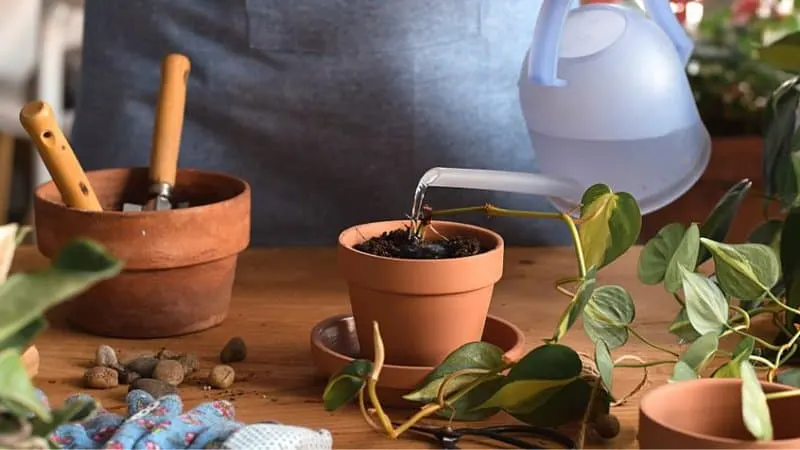
However, be warned. In the process of reducing the time between watering, you might end up overwatering your Pothos. You will have to be mindful and calculative when going about this.
Saving and Underwatered Pothos
With your Pothos dying because of being underwatered, all you will be left with brittle leaves turning yellow, then brown, and eventually crisping away and falling.
The topsoil will have cracks, and you will even be able to see some of the roots. Your plant will be a sorry sight, stringy and frail.
Hence, follow the succeeding steps below.
1. Repot the Plant
If you’ve planted your Pothos in a small pot, and if it is big enough, you need to repot it immediately.
Be gentle while taking the plant out to avoid damaging the roots. Carefully dig the soil away, and use gloved hands to remove the plant.
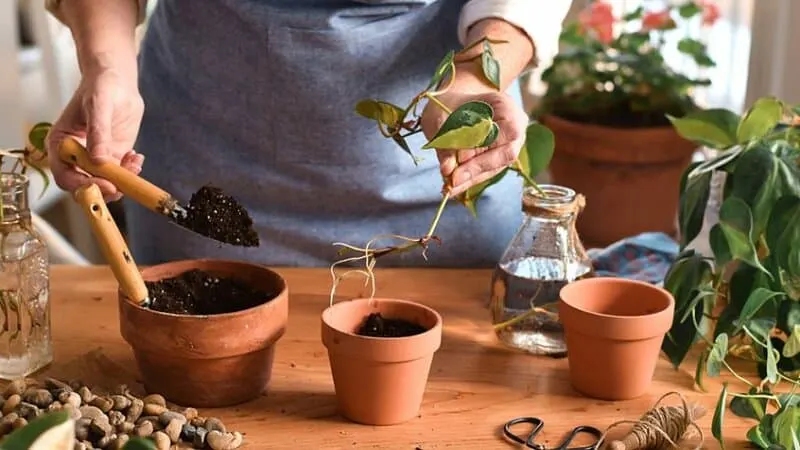
When repotting, make sure you use different soil that suits your needs. Also, choose your new planter carefully and check for any holes that may contribute to drainage.
2. Moisture Restoration
The next thing on your list must be restoring the plant’s moisture level and rehydrating it.
You can start by misting the plant. Create a misting schedule that you think can work well with your plant.
Mist the plant for at least three days so that the extra hydration helps it recover. Start watering it again, but be careful this time.
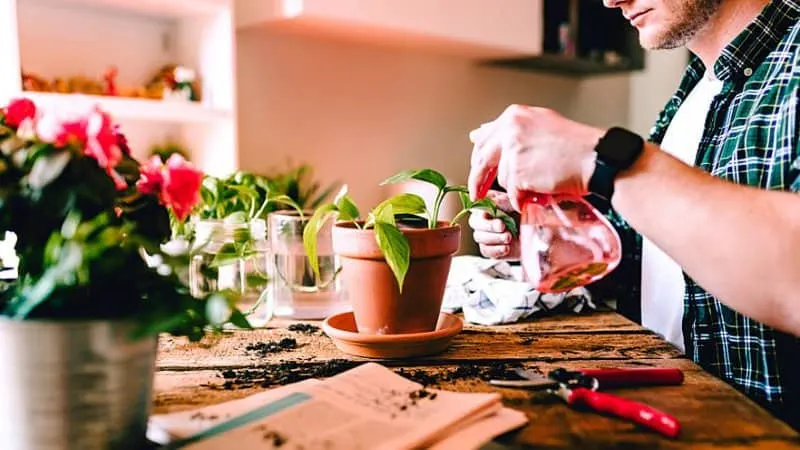
You do not want to overwater the plant, and you most certainly don’t want to underwater it – again.
3. Removing Damaged Leaves
Lead damage can spread. The yellowing and the browning that you notice can grow further.
As chlorophyll leaves the plant’s leaves, they will not only yellow but harden. No longer watering the plant and figuring out what went wrong can further the damage.
Carefully and with gloved hands, remove the damaged leaves or the damaged parts with scissors. When using scissors, make sure you do not end up cutting any of the healthy parts.
4. Prune Dead Stems
When you prune your Pothos, you will notice new vines growing on the nodes. You need this to propagate leaf growth so that the ones you cut off can be replaced.
Leaves are a plant’s kitchen, and the roots are the supplies.
When there are more kitchens, your plants watering needs will grow. That way, all water will be used up even if you are overwatering slightly.
Pruning helps new leaves grow and prevent overwatering, too. Additionally, you can avoid underwatering as well as all the water will be used by the leaves.

Read more about how to care for pothos plants.
Frequently Asked Questions about Underwatered Pothos
Can I underwater my Pothos plant?
It is possible to underwater a Pothos plant trying to avoid overwatering it. If you are using a small pot, there may not be enough space in there to hold water. As a result, it will overflow. Most of the water might not reach the roots in case there are holes in your pot.
How to tell if my Pothos plant needs watering?
Leaves turning yellow and brown, wilting, soil pulling away, and dried-up soil are signs your Pothos is dehydrated. Develop a watering schedule best suits your pothos’ needs. If you’re avoiding overwatering your Pothos plant, you could opt for misting 5 times a day for 2-3 days.
How much sun does a Pothos plant need?
Pothos are appreciative of bright sunlight for not more than 15 hours. Going beyond them can cause dehydration. However, if you grow your plants in low light, the lack of color intensity will result in the growth of smaller leaves that may not be ideal for the plant.

Daniel has been a plant enthusiast for over 20 years. He owns hundreds of houseplants and prepares for the chili growing seasons yearly with great anticipation. His favorite plants are plant species in the Araceae family, such as Monstera, Philodendron, and Anthurium. He also loves gardening and is growing hot peppers, tomatoes, and many more vegetables.


